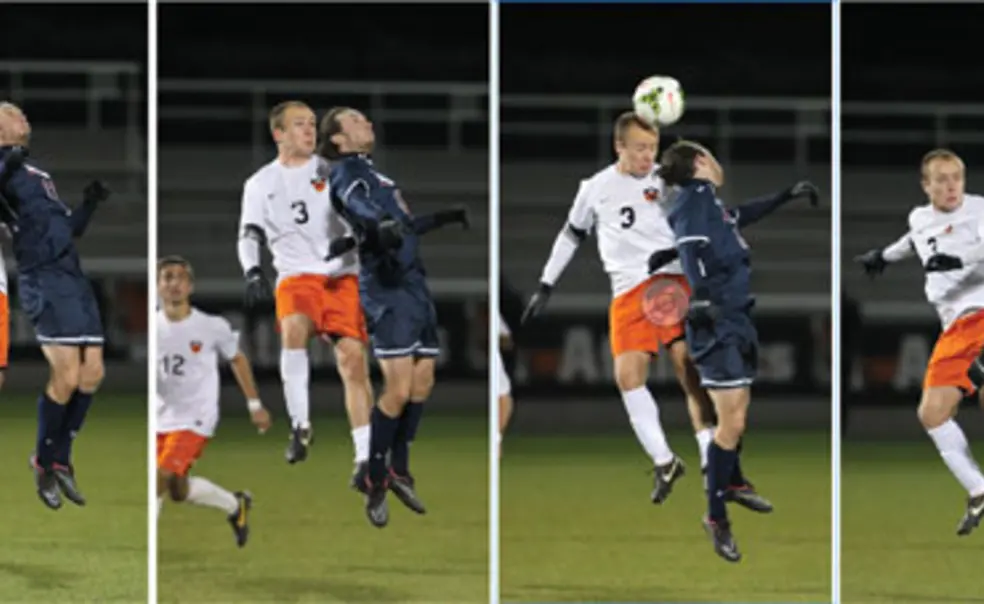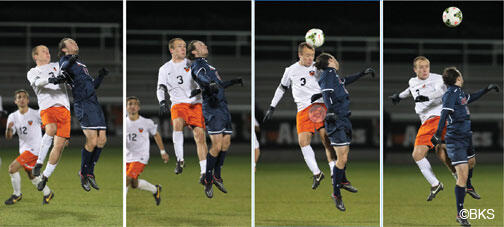Sports Medicine: Making an Impact
Princeton athletes provide data for research on health concern
Before the start of each practice and game this fall, members of the Princeton men’s and women’s soccer teams visited University Health Services research specialist Stephanie Amalfe for one final piece of equipment: a small sensor, about the diameter of a quarter, affixed with an adhesive patch behind the right ear.
Volunteers from the two teams took part in a season-long study of head impacts on the field using the sensors, which are equipped with an accelerometer and gyroscope. “Essentially, the sensors detect, measure, and record the accelerations of an athlete’s head,” Amalfe said.
Amalfe and principal investigator Dr. Margot Putukian, Princeton’s director of athletic medicine, hope the study will give a scientific estimate of the number and severity of impacts to the head that soccer and lacrosse players experience in a typical practice or game. (The men’s and women’s lacrosse teams began wearing sensors last year, and athletes at the University of North Carolina are participating as well.) The research also might contribute to an understanding of what types of impact cause concussions, but so far, no Princeton player wearing a sensor has sustained a concussion.
Putukian, a former soccer player at Yale, said that while helmet-mounted sensors have enabled similar studies in football and ice hockey, collecting data without the use of a helmet is a relatively recent development — and one that enables researchers to take a closer look at non-helmeted sports. “We are filling a gap, in terms of what we know about those sports,” she said.
Amalfe and Putukian are just beginning to tackle the vast amount of data collected during lacrosse season last spring and soccer season in the fall. Impacts to the head are marked with a time stamp that can be matched to video footage from the practice or game, to glean more information about the type of contact (heading the ball versus making contact with an opponent’s elbow, for example). Participating students also completed neuropsychological testing before and after the season, to determine any change in cognitive function.
Princeton’s involvement in concussion research stems largely from Putukian, who said that she took an interest in mild traumatic brain injury early in her career after encountering a few challenging cases while working at Penn State, long before concussion became a widely discussed topic outside the sports-medicine community. In addition to her research and her regular duties on the sidelines, she has served on advisory committees for the NFL, U.S. Lacrosse, and the Ivy League.
Putukian also is leading Princeton’s participation in a major multi-institution study of brain injury: the NCAA and U.S. Department of Defense Concussion Assessment, Research, and Education (CARE) Consortium. The University will be one of 12 core research sites for the $30 million initiative’s longitudinal clinical study, projected to be the largest-ever study of its type.














No responses yet